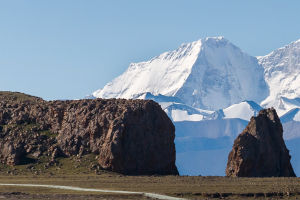The mudflats are the tidal inundation zone between the high and low tide levels along the coast. They are areas that are submerged in water during high tide and exposed to air during low tide.
These distinctive areas exhibit a blend of characteristics, encompassing elements from both marine and terrestrial ecosystems, as evidenced by the coexistence of plants, animals, soil, and water that display properties of both environments.
Whether organic matter brought by surface or subsurface streams, or nutrients from the ocean brought by the ebb and flow of the tide, they are continuously collected and deposited in the mudflats. These nutrients are difficult for species with higher trophic relationships to utilize, and a great variety of benthic animals play a vital part in helping to circulate these nutrients.
When the tide goes out, many small crabs emerge from the mud and move around. On the surface, it looks like they are not doing anything, but when you look closer, you will see that they are actually feeding on the mud. However, these crabs are not really eating the mud but putting it into their mouths and filtering out organic matter such as algae and plankton, then throwing the mud away. This seemingly small action accumulates the nutrients in the mud into their bodies for growth and development. These small crabs are then preyed upon by large predators such as birds, passing the nutrients to a higher level of trophic relationships.
In addition, many mudflat crabs live in the mud of the mudflats, and their burrowing behavior helps to unblock the deeper mud and allow fresh air or water to reach it, which is vital for the plants that grow on the mudflats.
The crabs that live in the mudflats are mainly species of the family Sagittidae and the general family of sand crabs, commonly known as the arc-sided beckoning tide crab, the short-bodied walleye crab, the Steller's new swell crab, the short-fingered monk crab, and the Taiwanese mud crab. It is hard to imagine that these small and seemingly insignificant crabs have such an important role in the ecosystem of the mudflats.
Although the mudflats are rich in species resources, it may be hard for you to imagine what kind of environment it is. With the development and use of marine resources, people are turning their attention to this fertile land. The mudflats were fenced off for reclamation, and the reclaimed mudflats became highly saline. Why is this?
It turns out that after the mudflats are fenced off from the seawater environment, the salinity and pH of the soil begin to show a rapid rise due to the evaporation of water, resulting in high soil salinity along the coast. However, the salinity of mudflat soils is not constant. Under the effect of rainfall and evaporation, soil salinity migrates up and down in the profile, showing seasonal changes: January- June is in the salt accumulation period, while July- September is in the desalination period.
In fact, the development and utilization of coastal mudflats in many areas have not fully considered the carrying capacity of resources and the environment. Land reclamation and environmental pollution have caused many negative impacts on the ecological environment of coastal mudflats, resulting in extensive ecological degradation of coastal mudflats.
The mudflats' ecological structure has been damaged, and its substrate has been polluted, leading to a decrease in productivity. As a result, the biodiversity has been reduced, and the ecological functions have been lost. The damage has caused many plants and animals to lose their habitats and forced them to move. Unfortunately, some endangered species have even become extinct due to these changes.
With the construction of an ecological civilization, more and more attention has been paid to the protection of mudflat resources. Many measures have been taken, such as the ecological restoration of degraded mudflats and the establishment of national nature reserves for mudflats.
There is much work to be done in order to better protect the ecological environment of mudflats and turn them into the "invisible paradise" along the coast.


